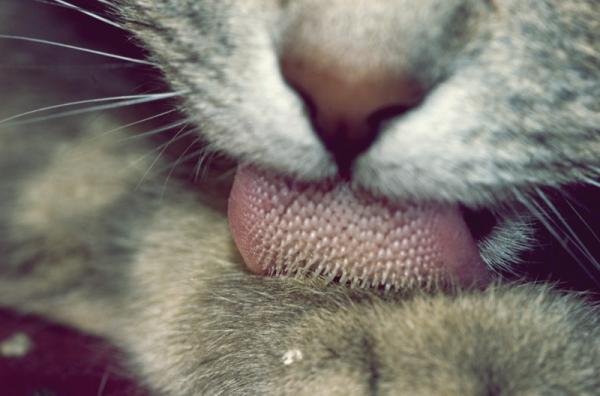Malta for cats – Different uses and how often to offer it

Cats are especially clean animals that spend hours grooming themselves. When licking they ingest a large amount of hair. If you live with a sure cat you have ever seen him cough and even vomit hairballs.
That’s when some people turn to Malt for cats, a very useful product of natural origin that improves the digestion and intestinal transit of our cat.
Discover everything related to malt for cats, including the necessary doses, to what age should be offered or information about vomiting. All the benefits of this product below:
What is malt?
Malt for cats is a colored paste similar to honey and more dense texture. It is composed of vegetable oils and fats, malt extract, fiber, dairy products and yeast mainly. It is also common to contain dyes, preservatives and vitamins.
In the market there are numerous brands with different formats. The most frequent is in the form of a tube of toothpaste. The composition varies slightly according to the brand but the base is the malt extract. Some cats show a predilection for a specific brand and eat it with more enthusiasm than other brands.

What is the malt for cats?
Cats in their daily toilet ingest numerous dead hairs that advance through their digestive system and can form larger or smaller balls. These are the so-called trichobezoars or more commonly known as hair balls.
The tongue of the cat as we can see in the image has spikes or projections of keratin called papillae, They help them brush their hair and remove dirt. But also contribute to detach the weak hairs and consequently to ingest hair.
Cat hairballs can accumulate in the intestine, stomach or esophagus. If the cat coughs and expels the ball easily it means that it has not passed the esophagus. If instead the cough is accompanied by nausea, lack of appetite and vomiting with half-digested food then the ball of hair is lodged in the stomach or small intestine. If our cat suffers from constipation and lack of appetite It may be due to a ball of hair lodged in the large intestine.
La Malta helps eliminate this excess of hair ingested by stool It has a laxative effect and helps improve intestinal transit. That is why it is also suitable for mild constipation problems. In short, it helps the hairs that our cat ingests to be expelled without problems throughout the digestive system.

How do I malt my cat?
As you well know, each cat is a world; some love malt, eat it directly from the container and lick it without problems. Others, on the other hand, will be more reluctant and will not want to eat it willingly.
In this case we can put a small amount of malt in one leg or in the corner of the mouth of the cat to lick it. He will not like it too much and will try to take it off with his licks. You can also try mixing the malt with the food, although due to the texture of the pasta, it may not be appropriate.
Maybe you have to chase your cat around the house every time it hits him but it’s something that he will thank for time and you will see the results right away.
It does not taste bad for cats so it will get used to taking it over time. You can also try different brands until you find the ideal one for your cat.
How much should I give him? And how much to offer?
In each dose with a ball the size of an almond or hazelnut is enough. If your cat likes you can give a little more.
For a short haired cat two shots per week they should be enough. In the case of cats with long hair, four times a week. In times of molting or if we notice that our cat coughs a lot we can give him malt daily until he sees improvement.

Malt does not replace brushing
We must not forget that a good brushing is fundamental for the health of our cat. With it we eliminate most weak hairs, dust or dirt that our cat can swallow when licking. We must choose the appropriate brush for the hair of our cat and perform brushing usually.
In short-haired cats, one or two brushed per week is sufficient but long-haired cats if they receive a daily brushing would be ideal. Discover brushes for short-haired cats as well as brushes for long-haired cats.
If you can not brush every day, make sure that at least once or twice a week brush it properly. In addition to reinforcing your bond with your cat by participating with him in the grooming, you will help him to make sure his coat is healthy and the hair ingested is considerably reduced. Do not forget that in spring and autumn, times of molting, you should brush it much more often.
Cats and malt
As we have seen, Malt is a very useful product for cats. Combined with a good brushing will help our cat to coexist with hairballs.
Sometimes obstructions caused by hairballs can be a problem; If the balls are accompanied by blood or the cat suffers a prolonged constipation go to your veterinarian.
We must not forget that cats lick, lick a lot. Every day they invest time in grooming and caring for their fur. That is why we should not be afraid if, in spite of malt and brushing them, they cough occasionally and expel ingested hair. It is normal and as long as it is not something exaggerated we should not worry.

If you want to read more articles similar to Malta for cats – Different uses and how often to offer it, we recommend that you enter in our section of extra care.


